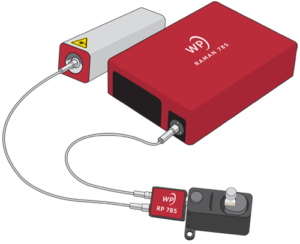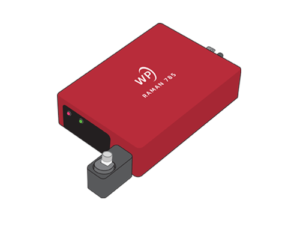We believe you should have full control and maximum flexibility when configuring your spectrometer. That’s why we offer so many build-to-print options for range, resolution, detector cooling, and sample coupling – backing each with our advice and experience. Learn more about each below, or contact us to discuss the best options for your application.
< SLIT WIDTH | SAMPLE COUPLING | DETECTOR COOLING >
SLIT WIDTH: Defining Resolution
We offer a 25 μm slit as standard for most of our spectrometers, and 15 & 50 μm slits as options to achieve better resolution or more throughput, respectively. Sensitivity and resolution are competing factors when choosing slit size. A larger slit allows more light to enter the spectrometer, increasing sensitivity for low-light applications. Resolution improves, however, as slit width is reduced (though not always linearly). Due to the high sensitivity of our low f/# spectrometer designs, it is often possible to use a smaller slit width than would be required with a typical f/4 spectrometer, allowing you to achieve higher resolution.
SAMPLE COUPLING: Probe and fibers, or integrated laser?
How you interface with your Raman sample depends not only on whether you value convenience or configurability, but also on the data quality you require. See below for some quick tips, or reach our sample coupling tech note to learn how to get more out of our many sample coupling & configuration options.
DETECTOR COOLING: Controlling noise
 We offer regulated (-R) and TEC-cooled (-C) detectors for our X series spectrometers, allowing you to balance your required signal to noise ratio (SNR) and temperature stability with cost for the best possible value.
We offer regulated (-R) and TEC-cooled (-C) detectors for our X series spectrometers, allowing you to balance your required signal to noise ratio (SNR) and temperature stability with cost for the best possible value.
A detector regulated to 10°C is often adequate for most spectroscopy applications since measurement times are typically below 1000 ms, but for lowest limit of detection and long term measurements, a thermoelectrically cooled (TEC) detector cooled to to -15°C delivers better performance. Contact us to discuss the right choice for your application.
REGULATED |
TEC COOLED |
|
| Detector temperature | approx. 10°C | approx. -15°C |
| Benefits | Fixed dark noise (better spectral reproducibility) | Lowest dark noise option – highly consistent |
| Signal to noise | Improved SNR compared to ambient detector | Best SNR for lowest limits of detection |
| Applications | Great for variable environments & handheld use | Ideal for long integration time measurements |




